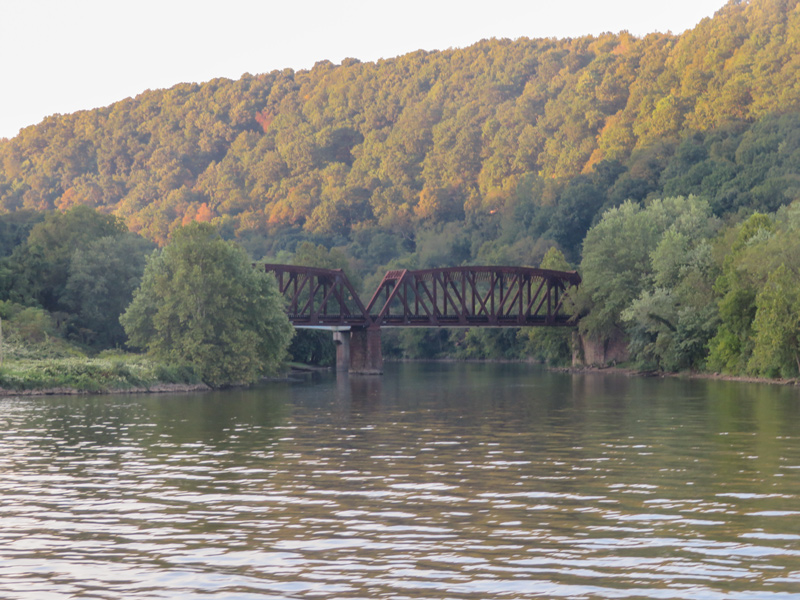Newell, WV The pirogue and canoe used to lighten the barge both spring leaks. They stop to repair the leaks and dry wet cargo.
Leaky Pirogue
the Perogue was loaded as his been my practice since I left Pittsburgh, in order as much as posseble to lighten the boat, the [man or men] who conducted her called as in distress about an hour after we had got under way, we came too and waaited her coming up found she had sprung a leek and had nearly filled; this accedent was truly distressing, as her load consisting of articles of hard-ware, intended as presents to the Indians got wet and I fear are much damaged
—Meriwether Lewis
Leaky Canoe
purchased a canoe compleat with two paddles and two poles for which I gave 11$, found that my new purchase leaked so much that she was unsafe woithout some repairs
—Meriwether Lewis
Leaving Pennsylvania
passed the line, which divides the States of Virginia and Pensylvania on the east side of the river and on the West that of Pensylvania from the State of Ohio;
—Meriwether Lewis
Drying Out
opened the articles which had got wet and exposed them to the sun; set some of my hands to repareing the canoes which I effected before night had the articles well oiled and put up in oilcloth baggs and returned to the casks in which they were previously were, hired another hand to go with me as far as Wheeling— the articles were not as much injured as I had supposed—
—Meriwether Lewis
Fort Kaskaskia Lease
This Indenture made this fourth day of September Eighteen hundred and three, by and between Henry Dearborn Secretary of the Department of War of the United States on the one part, and John Edgar of Kaskaskias in the Indiana Territory, on the other part, Witnesseth, That the said John Edgar on his part, for the consideration hereafter mentioned, doth hereby release and quitclaim to the said Henry Dearborn, in his said capacity, and to bis successor in said Office, for the term of three years (rom the date of these presents, the following tract or parcel of land, situated, lying and being on the east side of Kaskaskias River, opposite to the village of Kaskaskias aforesaid . . . . containing by estimation, One hundred and twenty acres more or less, releasing, and quitclaiming to the said Henry Dearborn in his said capacity, and to his successor in said office, the right of erecting a Garrison on said premises, of procuring such quantity of stone, of making such quantity of brick and of cutting such quantity of timber and of taking such other materials as may be necessary to complete said Garrison . . . .[1]Clarence E. Carter, The Territorial Papers of the United States (Washington, DC: United States Government Printing Office, 1948), 7:154–155, digitized by Google books.
Notes
| ↑1 | Clarence E. Carter, The Territorial Papers of the United States (Washington, DC: United States Government Printing Office, 1948), 7:154–155, digitized by Google books. |
|---|

